|
| Tomitaro Makino |

Dr. Tomitaro Makino
(1862-1957)
Tomitaro Makino was born in Kochi, on 24th April 1862. He is one of the most famous botanist in Japan. In 1940, he published “An illustrated flora of Nippon by Dr. T. Makino”, a reference work that remains indispensable to professional botanists and enthusiasts today. |

|
|
|
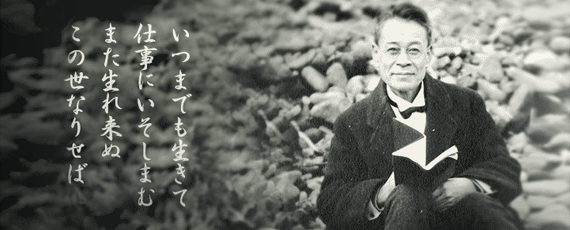
The Night Before His Birth
The Late Edo Period
Tomitaro was born in an age of disturbance in the late Edo period, which began with the arrival in Japan of Matthew Perry, an American envoy in 1853. Just a month before Tomitaro’s birth, Ryoma Sakamoto left the Tosa Clan. In the same year, the Teradaya incident and the Namamugi incident also happened, so it can be said that it was a time when Japan was setting out on the way to becoming a modern state. It was right at the dawn of Japanese botany as well as that of Japan itself that Tomitaro entered the world.
|
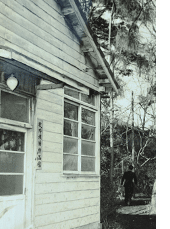 The Night Before His Birth
The Night Before His Birth
Personal History Birth of Tomitaro
Tomitaro was born in Sakawa Village (now Sakawa City) in Takaoka County’s Tosa City to Kishiya - a wealthy merchant family dealing sake brewing - on April 24, in 1862, and was known by the childhood name of Seitaro. He grew up in affluent surroundings, but his father Sahei passed away when he was three years old, his mother Kusu died of illness when he was five, and his grandfather Kosaemon also died when he was six. He was brought up delicately by his grandmother Namiko because he was a frail child. |
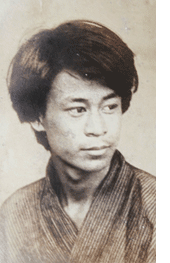 Boyhood Boyhood
Plant Collecting in the Fields and Mountains of Tosa
Studying in Sakawa was not enough for Tomitaro, so he went to what is today known as Kochi City at the age of 17 and met Koichiro Naganuma, a teacher at Kochi Junior High School and there Tomitaro learned botany as a new science and was inspired to plant studies. That led Tomitaro to the visit of Tokyo for the first time at the age of 19 in 1881 to see the Second National Industrial Exhibition and buy a microscope and some books. In Tokyo, He visited Yoshio Tanaka and Motoyoshi Ono in the Bureau of Museums at the Ministry of Education, listened to lectures on the latest botanical developments and visited botanical gardens. |
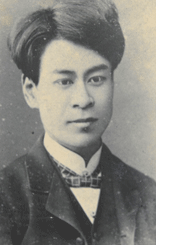 Adolescence Adolescence
Going to Tokyo with aspirations
Tomitaro resolved to study botany in earnest and went to Tokyo in 1884 again. He was allowed to go in and out of botany classes at the Faculty of Science at Tokyo University and devoted himself to plant studies there using books and specimens .In those days. Japanese researchers sent plants abroad to have them identified. Tomitaro sent some to Maximowicz, a Russian authority on plant studies in East Asia. Tomitaro was a gifted artist, as confirmed by the letter Maximowicz sent back to him highly praising his drawings. |
 Middle Age Middle Age
The Development of a Botanist
While Tomitaro was very active in pursuits such as the issue of Nihon Shokubutsushi Zuhen (Illustrated Flora of Japan) and the definition of a series of new species, his family's business began to decline as he spent too much money for his study. In 1891 he went home to Sakawa to dispose of his furniture and household goods. He was working hard on sketching and collecting plants in Kochi when he was invited to the Imperial University's College of Science in Tokyo to act as an assistant by Jinzo Matsumura who had become a professor after the dismissal of Professor Yatabe.
|
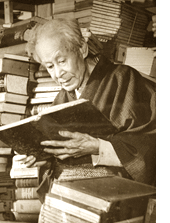 Last Years Last Years
Resignation from University
In 1927, Tomitaro received a Doctorate of Science as the people around him recommended it but he regretted it later to some degree because he felt as if he had become ordinary. He handed in his resignation to the university where he had worked for 47 years and left in 1939. He remained as a lecturer to the end, as he disliked any title. After his resignation, he became much more absorbed in plant studies and frequently traveled all over Japan in related activities. His 94-year life ended on January 18th, 1957 |
Living
Days Spent in Oizumi
When Tomitaro reached the age of around 90, it became impossible for him to go to the mountains and collect plants, so he spent many hours at home in Oizumi. He collected plants he had transplanted to his garden, sorted out specimens and engaged in long conversations about plants with visitors. There are many reports that he devoted every waking minute to plant studies and writing, despite his family's concerns, until the age of 93 when illness caused him to become bedridden.

Plants Named by tomitaro
More than 1,500 taxa of plants were named by Tomitaro, including new species and new varieties such as Theligonum Japonicum. He named not only wild plants but also vegetables, flowers and ornamental plants. The subjects of his research involved all the plants we see around us today. The sheer breadth of his work as well as the number of subjects he studied earned him the name of "the Father of Japanese Botany.

|
|
|











